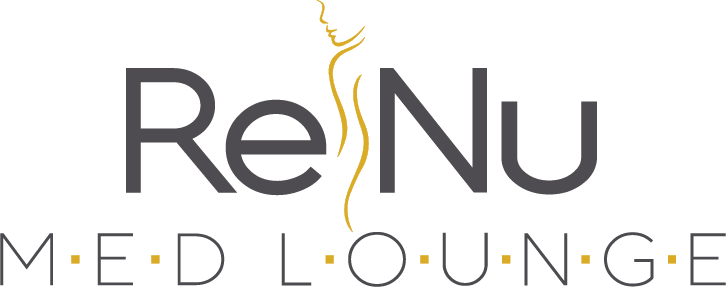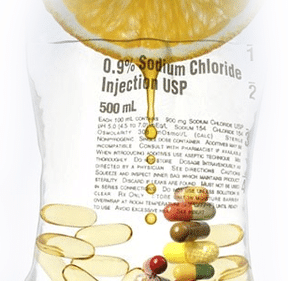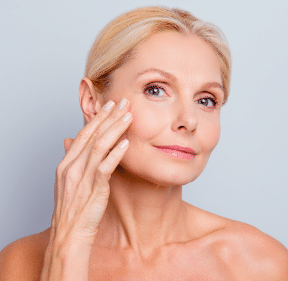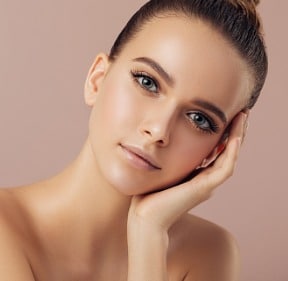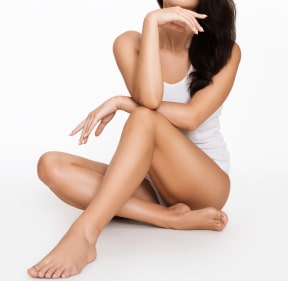Varicose Veins FAQs
Varicose veins are enlarged veins near the surface of the skin which may be troubling both cosmetically and medically. They occur most frequently in the legs, but may exist elsewhere in the body. Following are some of the questions frequently asked by patients who suffer with varicose veins.
What causes varicose veins
Varicose veins are caused by a backflow of blood in the veins due to venous insufficiency. Venous insufficiency is the diseased condition of veins no longer able to carry blood efficiently back to the heart. When blood pools in the legs, varicose veins result. Venous insufficiency is sometimes caused by deep vein thrombosis or high blood pressure inside the veins of the leg. Damaged veins may also be the result of injury, disease or surgery.
Who is most at risk for varicose veins?
Risk factors for varicose veins may include a family history of this condition, obesity, pregnancy and a sedentary lifestyle. Individuals who work in professions which require a great deal of sitting or standing, like waiters, drivers, or nurses, or individuals who spend a great deal of time traveling in cars or airplanes, are at high risk. Varicose veins occur more commonly in women and individuals who smoke.
What is happening inside varicose veins to create the problem?
Diseased veins have damaged valves and do not take blood back up to the heart efficiently. As the condition worsens, blood may start flowing in the opposite direction which is called venous reflux. Venous reflux can cause discoloration, skin breakdown, bleeding, and even ulceration. Once this happens, treatment may be more difficult. This is why it is important to intervene early in the disease process
What are the symptoms of varicose veins?
Varicose veins present as swollen or bulging veins or swelling in the legs, feet or ankles. Patients may experience itching over the affected vein, and aching, heaviness or pain in the legs, particularly after sitting or standing for a long time. The skin may become scaly, dry, thinned, discolored or inflamed.
Apart from their appearance, how are varicose veins diagnosed?
Besides a careful physical examination for skin swelling, discoloration or breakdown, the severity of the condition may be diagnosed through ultrasound and angioplasty.
Are varicose veins dangerous?
In and of themselves varicose veins are not dangerous, just unsightly and perhaps uncomfortable. They may, however be an indicator of more serious vascular disease and so should be medically evaluated.
What treatment options are available to treat varicose veins?
There are several options available, depending on the severity of the condition. These options may include:
What happens to my circulation when the veins are removed or closed?
Once the veins are collapsed and become nonfunctional, the blood flow will be naturally redirected to healthy veins and circulation will continue uninterrupted.
Is the treatment of varicose veins or spider veins covered by insurance?
If a patient has symptomatic vein disease, most insurance companies and Medicare will cover the consultation and diagnostic ultrasound examination. If the examination reveals dysfunction of major veins, further treatment by endovenous laser is also covered by all major insurance carriers and Medicare.
Spider Veins FAQs
Spider veins, also known as telengiectasias, are a very common problem, aesthetically troubling to many people. Following are some frequently asked questions about spider veins.
What are spider veins?
Spider veins are veins in which the valves have stopped functioning properly. When the valves of a vein are working correctly, they keep blood flowing in one direction. When they become damaged, they allow blood to flow backwards and pool, causing the walls of the vein to distend and enlarge. This is called venous reflux. When smaller, more superficial veins are involved, a web of red or blue thin branches appear on the surface of the skin, usually on the legs or face. These are referred to as spider veins.
What is the difference between spider veins and varicose veins?
Spider veins, although they result from the same type of vascular malfunction as varicose veins, are much less serious. Spider veins are a superficial manifestation of the problem. When veins become varicose, their walls have thinned considerably and blood has pooled in them so that they appear as palpable dark cords on the surface of the skin.
What are the risk factors for spider veins?
The causes of spider are not completely known, but many identifiable factors put an individual at risk. Risk factors for spider veins include:
Since hormonal changes increase the risk of developing spider veins there is a higher risk of developing the problem during puberty, menopause, pregnancy and while taking birth control medication. Since extra weight puts stress on veins, pregnancy involves a double risk. Because women go through greater hormonal fluctuations and may go through pregnancy, more women than men develop spider veins.
Can spider veins be dangerous?
Not usually. In and of themselves, varicose veins are not usually dangerous, but left untreated they may develop into varicose veins which are a more serious medical condition. Varicose veins may result in pain, fatigue, or inflammation of the skin and may be evidence of arteriosclerosis or clotting difficulties.
How are spider veins treated?
As with so many other medical conditions, weight loss and regular exercise are helpful in treating spider veins and particularly in keeping them from developing into varicose veins. Wearing compression stockings and avoiding leg crossing and sitting or standing for prolonged periods may also be useful.
For patients who want spider veins removed for cosmetic reasons, the two most frequently employed methods are sclerotherapy and laser ablation. Both are minimally invasive, outpatient procedures, providing excellent results.
Can spider veins be prevented?
Possibly. Since there is a hereditary component to the development of spider veins, they cannot be prevented in all cases. Keeping to a healthy diet and normal weight, applying sunscreen, exercising regularly, and avoiding long periods of sitting or standing may prevent the development of spider veins and will certainly contribute to good vascular health.
Schedule Your Consultation Today!
Interested in learning more about treatment options for spider veins and varicose veins? Please call 818-308-7131 to schedule your appointment with Dr. Sylvia Ashour and her skilled staff today! Our practice serves Studio City & the greater California area.
